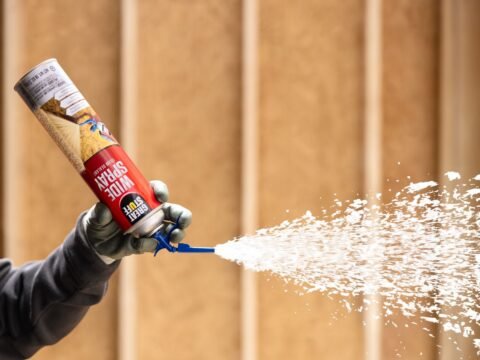- Call Us For A Quote
- (613) 319-8422
- info@613sprayfoam.ca
Spray Foam Insulation: 4 Mistakes to Avoid

Why Is Spray Foam Ideal For Basement Insulation?
January 16, 2022Spray foam insulation can be an excellent product. Insulated homes may be among the most pleasant and energy-efficient structures ever built. I’ve been inside many of these homes, and I can confirm that the typical spray foam-insulated home has a higher efficiency than a standard fiberglass batt-insulated home. What about the unusual homes? Spray foam insulation has issues, so let’s look at a few of these here.
In order of prevalence, here are the problems, with explanations following the list:
- The foam spray isn’t thick enough.
- Spray foam installers did not see some air leakage locations.
- Spray foam installers could not comprehend the building envelope and spray in the wrong amount or excessively.
- Spray foam expands and separates from the frame.
The Foam Spray Isn’t Thick Enough.
Because closed-cell foam has more R-values per square inch, contractors typically spray 2” on the walls and three inches on rooflines to satisfy the energy code’s requirements for R-13 and R-19 in the respective. It is more frequent in closed-cell foams; however, it can happen with open-cell foam too.
The open-cell foam typically fills the frame cavity, making it easy to know whether the installer has sprayed enough. Closed-cell foam won’t completely cover the entire hole, so it’s important to check several places to ensure that you don’t short.
Spray foam installers did not see some air leakage locations.
I looked at an area of 10,000 square feet, which had spray foam everywhere, and the owners were having a severe issue with their first summer at home.
The issue was that the builders missed a few areas near the soffit on the attic above the master bedroom. Additionally, gaps in the tray ceiling allowed humid air to enter the space, and it naturally sought out the cold, hard surface to condense on.
One of the spray foam’s significant benefits is its air sealing capability; however, it is disadvantageous to close spaces that aren’t spraying. In this case, it’s crucial to seal the envelope entirely. You can test the spray foam for a blower door before installing the drywall with spray foam for new construction. In addition, you can check for leaks using the aid of a fog maker.
Spray foam installers were unable to comprehend the enclosure of the building and sprayed at the wrong level or excessively.
In more complex homes, identifying the precise location of the enclosure can be difficult. It could be an air leak if the builder misses specific components, but it could also be a thermal bypass owing to the lack of insulation. Each enclosure piece should be insulated, or else the home will experience excessive heat loss or gain.
Another issue is that the contractor sprays additional foam because they’re not aware of the exact location of the enclosure for the building, which is the boundary that separates the unconditioned and conditioned space. The homeowner paid an extra fee and received nothing in return.
Spray foam expands and separates from the framing.
I’ve only witnessed this once, and it was using closed-cell foam; however, I’ve heard about this happening in open-cell foam too. I’m not sure of the specifics, but I’ve heard of it. It could be due to an unsuitable chemical mix, poor mixing, or a too high temperature. A tiny amount of uninsulated space like that could be lots of wasted energy when the entire house is affected as it does here. Whatever the reason, it’s not a great thing.
Conclusion
It’s an automatic winner. Every product comes with risks, and spray foam is undoubtedly no exception. The good thing, however, the problems with spray foam are usually less frequent and can be overcome with proper preparation and following-through.
613 Spray Foam is able to fulfill any spray insulation requirements for your Ottawa house, warehouse, store, and any building structure. Contact 613 Spray Foam on (613) 319-8422 or email us at info@613sprayfoam.ca for more details.




